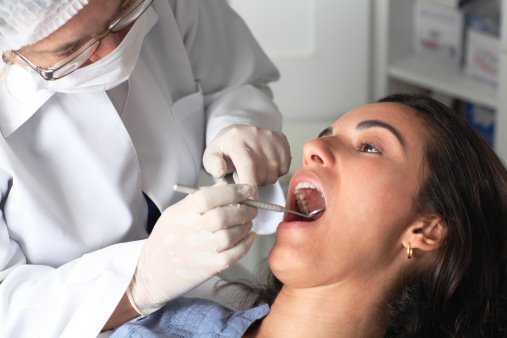Enter your email to receive the CareQuest newsletter:
September 17, 2021
By Jeremy Horst Keeper, DDS, PhD, director, Clinical Innovation, CareQuest Innovation Partners
& Sharity Ludwig, EPDH, MS, director, Alternative Care Models, Advantage Dental Oral Health Center and Affiliated Practices
Silver diamine fluoride (SDF) — a liquid medication used to treat and prevent caries — has proven to be an especially valuable tool during the COVID-19 pandemic, when minimally invasive care became more widespread. Despite the black stain it leaves on the damaged cavity portion of the tooth, nearly 80% of adults in a recent survey think that the application of SDF on posterior teeth is acceptable. Acceptance for children can be even higher — another study found that 80% of parents accepted SDF anywhere in the mouth. And among parents whose children were actually treated with SDF, only 3% were uncomfortable with the stain.
But still, there are providers who doubt its value.
As we shared in a recent CareQuest Institute webinar on the topic, SDF can be a useful treatment in a variety of settings with a variety of patients. Yes, the short-term taste and smell can be off-putting. And there’s the main side effect that any porous tooth structure (caries or hypomineralization) will stain black. But, in our experience, for many patients, it’s the right and best option.
Here are four reasons we believe more providers should be using SDF:
1. Silver diamine fluoride is effective and has the ADA’s strongest seal of support.
There is no question about the effectiveness of SDF for controlling dental caries. The ADA Council on Scientific Affairs concluded that “38% silver diamine fluoride solution applied biannually [is] effective for arresting advanced cavitated carious lesions on any coronal surface (moderate to high certainty).” And assured “clinicians are encouraged to prioritize use of [nonrestorative treatments] based on effectiveness, safety, and feasibility." This level of certainty that a dental procedure actually works is unprecedented.
2. Silver diamine fluoride can make money for providers and save money for patients.
The cost of SDF itself and the speed of application result in a dramatically lowered cost for cavity treatment compared to fillings — a win for patients! And the profit margin and efficiency make it profitable for dental teams.
Of course, the payment model in which you practice is part of the equation. In a value-based contract, the focus is on oral health outcomes and not outputs. SDF, with the antimicrobial component, influences the disease that leads to cavities and improves oral health. In addition, a provider can easily use SDF at an exam appointment after diagnosis of lesions to start repairing the tooth structure.
3. Choosing silver diamine fluoride offers an opportunity to build patient trust.
Some providers don’t think patients want SDFs, but we’ve found that’s often not the case. This is an opportunity for providers to put aside their assumptions and truly listen to patients and hear their needs.
When SDF was first introduced to the US, there were dentists standing on tables demanding that their colleagues who used it should lose their licenses. Now, those same dentists are the leading advocates for SDF, writing legislation to support it and running clinical trials to advance its use. They learned that it works and that patients want it. It turns out that most patients are not as focused on cosmetics as dentists are, but they do trust dentists to guide them. When disease control is the first step, and then esthetics are considered, you can build long-term trust.
4. Silver diamine fluoride is the best chance we have to control the most common disease.
No one wants to turn cavities black. No one likes the taste of SDF. But SDF controls the disease dental caries more effectively than anything we have ever seen: 1 or 2 applications of SDF per year stops 4 in 5 cavities and 60% less new cavities occur with SDF treatment just once per year.
All providers have patients who keep getting new and recurrent cavities, despite everyone’s best attempts. This is the place where dental teams can start — it allows providers to first control the disease and then make the teeth more beautiful when resources allow. In fact, it works so well that it usually ends up being offered throughout a practice. Further, SDF can be done anywhere, by essentially all members of the dental team. It is hard to imagine a better solution for cavities.
Change is hard, especially when it means working in a new and different way. But adding SDF to a provider’s toolbox can attract new patients to a practice. And for existing patients, it can be an important step toward delivering truly patient-centered care — a worthy goal for all of us.